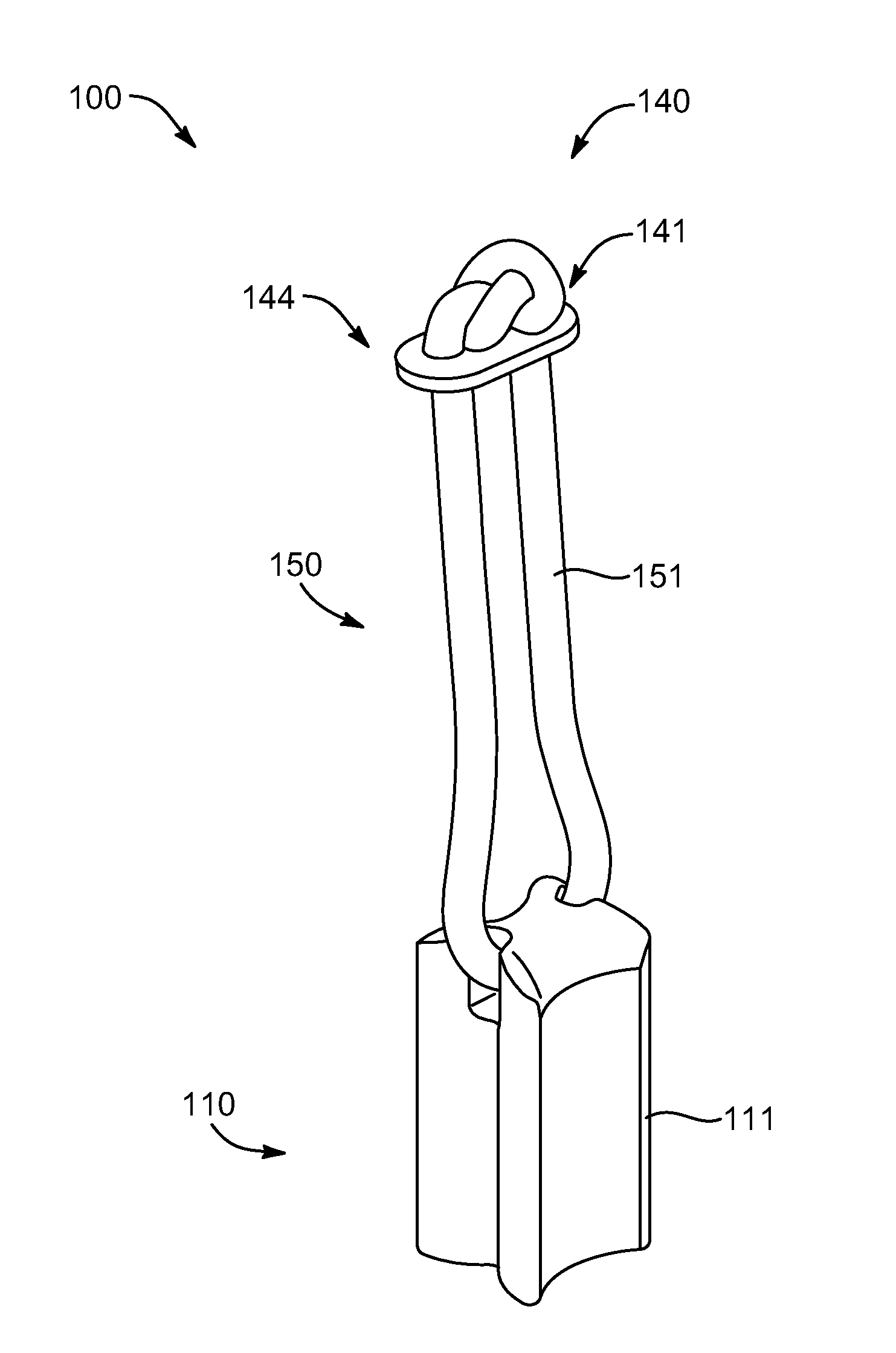Double bundle acl repair system
a double bundle and acl technology, applied in the field of anterior cruciate ligament (acl) repair surgery, can solve the problems of increasing the stiffness of the graft, the inability of the ligament to stabilize the knee joint, and the inferior strength and stiffness at 4 weeks compared with cortical fixation, so as to facilitate the tensioning of the pl bundle and facilitate the separation of the graft bundles
- Summary
- Abstract
- Description
- Claims
- Application Information
AI Technical Summary
Benefits of technology
Problems solved by technology
Method used
Image
Examples
Embodiment Construction
[0113]The present disclosure advances the state of the art by providing apparatus and methods for single tunnel, double bundle ACL reconstruction.
[0114]In this specification, standard medical directional terms are employed with their ordinary and customary meanings. Superior means toward the head. Inferior means away from the head. Anterior means toward the front. Posterior means toward the back. Medial means toward the midline, or plane of bilateral symmetry, of the body. Lateral means away from the midline of the body. Proximal means toward the trunk of the body. Distal means away from the trunk.
[0115]In this specification, a standard system of three mutually perpendicular reference planes is employed. A sagittal plane divides a body into bilaterally symmetric right and left portions. A coronal plane divides a body into anterior and posterior portions. A transverse plane divides a body into superior and inferior portions.
[0116]In this specification, standard knee anatomical terms ...
PUM
 Login to View More
Login to View More Abstract
Description
Claims
Application Information
 Login to View More
Login to View More - R&D
- Intellectual Property
- Life Sciences
- Materials
- Tech Scout
- Unparalleled Data Quality
- Higher Quality Content
- 60% Fewer Hallucinations
Browse by: Latest US Patents, China's latest patents, Technical Efficacy Thesaurus, Application Domain, Technology Topic, Popular Technical Reports.
© 2025 PatSnap. All rights reserved.Legal|Privacy policy|Modern Slavery Act Transparency Statement|Sitemap|About US| Contact US: help@patsnap.com



